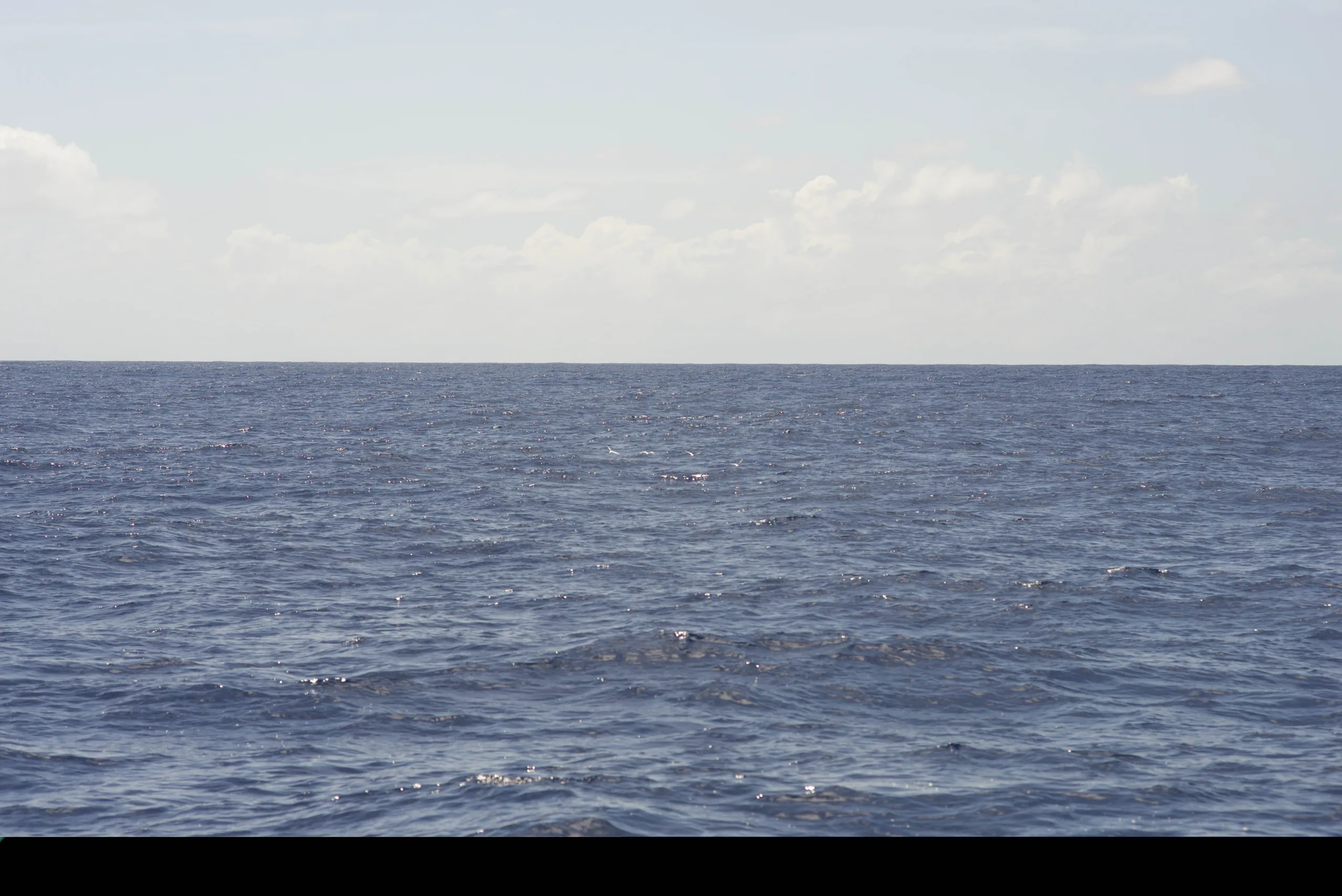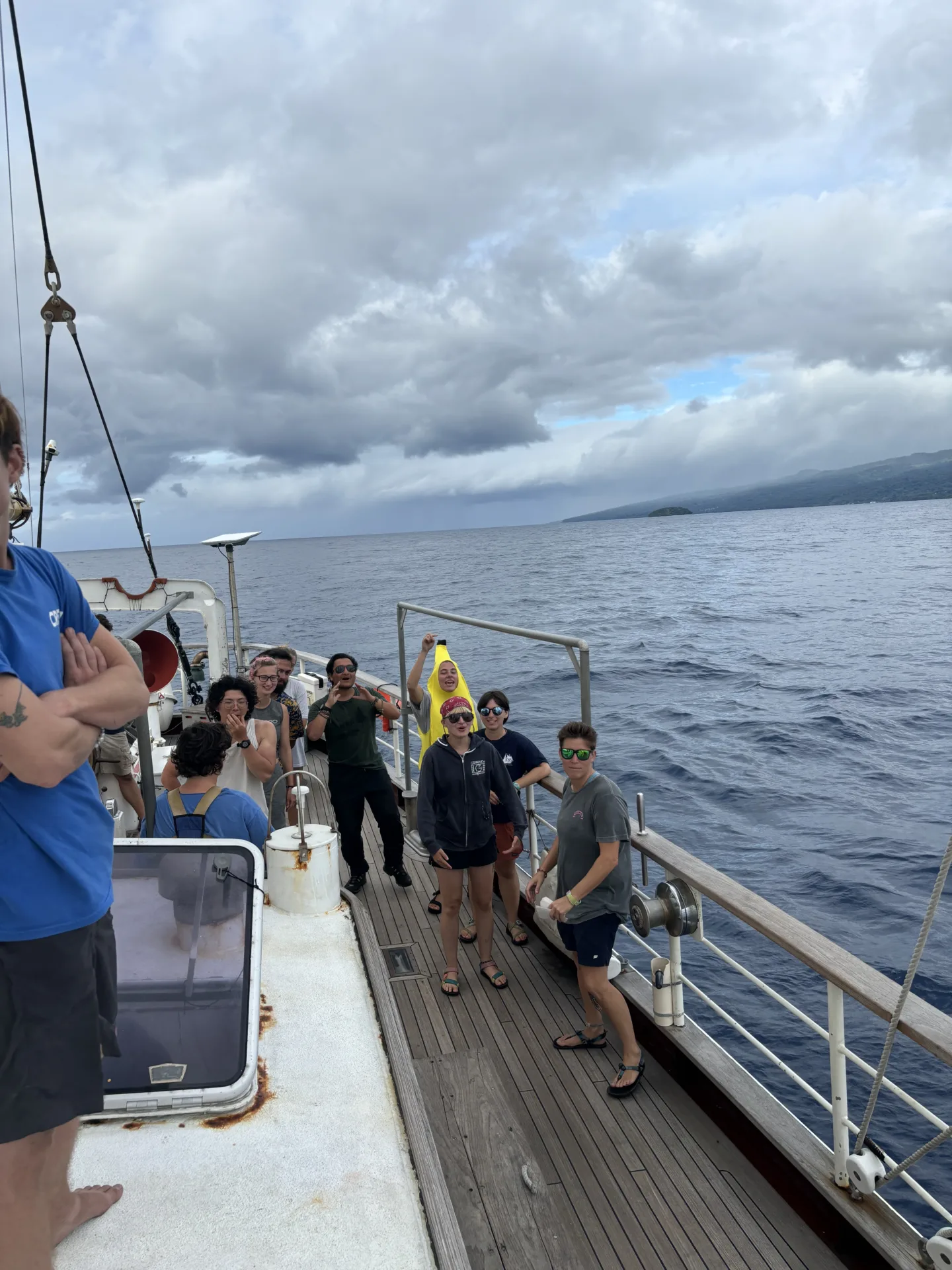Programs Blog
On Fresh Water

November 1 2024
Location: 18˚ 04.9’ S, 177˚ 07.2’E (a few hours from Port Denarau, Fiji)
Weather: Sunny and hot
Hello again from the Robert C. Seamans! We’ve crossed the international date line twice now, going from the Eastern to Western hemisphere in a matter of seconds. Although this technically means that we time traveled a whole day into the past, we on the ship chose to keep a regular time schedule, staying in UTC -12 the entire time (16 hours ahead of the east coast of the United States). Even though our real time zone description should have been UTC +12 for a few days, we stayed at UTC -12. This helped avoid confusion about what day it was, and saved us from having to repeat a date twice, Groundhog Day-style.
For this blog post, I’m going to talk about how we have plenty of fresh water on board. We have two watermakers in the forward machinery space that supply water for the entire ship’s company. There’s not necessarily unlimited water (we take two-minute “Navy showers” to conserve water), but there’s always plenty to cook with, wash dishes, keep the ship clean, and drink as much as we want. We’ve been consistently using between 400 and 450 gallons of water per day, which is a little less than on a normal trip because the ship isn’t fully occupied. Our engineers, Sam and JC, work hard to keep the watermakers and all of the other equipment on board in good working order.
The watermakers “make” water through a process called reverse osmosis (RO). Normal osmosis happens when there’s a difference in concentrations of salt between two liquids separated by a membrane. The more concentrated solution will diffuse across the membrane to equalize the concentrations. RO works by increasing the pressure differential so the flow goes the other way; the salty ocean water diffuses across the membrane, “making” fresh water.
To make water, a pump first draws up ocean water and passes it through a media filter made of sand, which filters out any large particulates. Then, a second pump draws it through a 20-micron and 5-micron filter. The water is drawn up by a high pressure (800 psi) pump where it passes through a membrane and into one of Bobby C’s four holding tanks. We have a total of 2,600 gallons of water storage and can make water at 80 gallons per hour, faster than we consume it, so the engineers can turn the watermakers off for a day or two and not be worried about running low.
Since the RO process filters out most of the ions that tap water normally has, it tastes a bit funky, but that can be remedied by putting a tiiiiiiiny bit of iodized table salt into your water bottle. It’s definitely a bit of an art to tip the salt shaker just right so your water tastes like regular water and not like the ocean water that just got purified, but once you figure it out, it works well. I’m still missing the well water I grew up on, but it’s pretty amazing that we can literally make fresh water in the middle of the ocean.
The watermaker also doesn’t filter out every possible bacteria or chemical, so we can’t make water when we’re anchored near a port—there’s too high a chance the water isn’t clean enough to drink. This means we have to be extra careful about how we use water when at anchor, because we can’t make more until we get underway again.
The preciousness of fresh water is a little bit ironic because we are surrounded by miles and miles of ocean as far as the eye can see, but none of it is drinkable. There are little pieces of masking tape on the walls in the forward machinery space with notes written on them by a previous engineer like “We <3 you water,” and “THANK YOU WATER.” Every time I go down below to do a boat check, I am reminded of how precarious life at sea can be and to be thankful for the water that we sail on, fish out of, and use to sustain us.
Shoutouts: Happy belated birthday, Dad (50 is the new 30, right?) and Lu (16?!?!?!?!?). Say hello to Nutmeg for me :). Thank you to the 1604 crew for finding us a new house #homeownerparttwo #wewillmisstheghostofcharlesschulz Hadley- there’s lots of snails that live in the ocean here.
That’s all for now. Soon we’ll be back in Port Denarau for the hull cleaning, and then off to New Zealand!
–Isabella Hackerman, Macalester College

Recent Posts from the Ships
- Ocean Classroom 2024-A collaborative high school program with Proctor Academy
- Collaborations and Long-term Commitments: SEA’s Caribbean Reef Program Sets a Course for Coastal Programs that Compliment Shipboard Experiences.
- Sea Education Association students prepare for life underway using state of the art nautical simulation from Wartsila Corporation.
- SEA Writer 2022, Magazines From the Summer SEA Quest Students
- Technology@SEA: Upgrades Allow Insight into Ocean Depths
Programs
- Gap Year
- Ocean Exploration
- High School
- Science at SEA
- SEA Expedition
- SEAScape
- Pre-College
- Proctor Ocean Classroom
- Protecting the Phoenix Islands
- SPICE
- Stanford@SEA
- Undergraduate
- Climate and Society
- Climate Change and Coastal Resilience
- Coral Reef Conservation
- Marine Biodiversity and Conservation
- MBL
- Ocean Exploration: Plastics
- Ocean Policy: Marine Protected Areas
- Oceans and Climate
- Pacific Reef Expedition
- The Global Ocean: Hawai'i
- The Global Ocean: New Zealand